Layers of Time – Design and designers through the lens of time
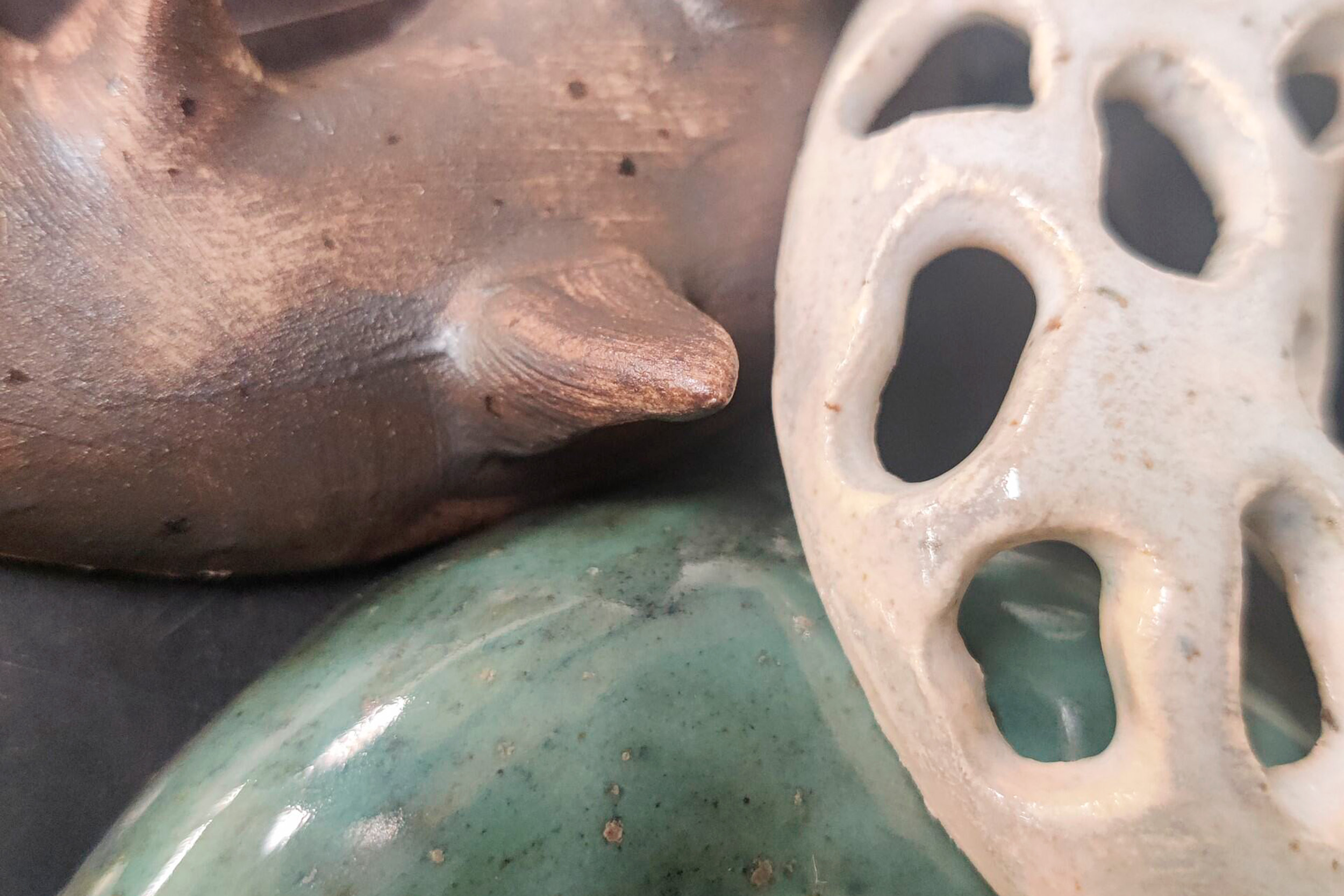
In Smart and Sustainable Design, we begin our studies by trying out new design techniques. Then we are challenged to create a collaborative exhibition of our work created during the first study module.
We are people from all corners of the world, from different backgrounds as well as vastly different ages stepping into the world of design as first year students in the Smart and Sustainable Design degree programme. We have drawn sneakers and a live model, created concepts for the future and learned about first aid.
During our very first and somewhat hectic module we also had the opportunity to try the two materials of stoneware clay and glass powder and create playful art pieces – most of us for the very first time.
Journey from powder to glass
Glass pieces were made from recycled glass powder. The process of creating something solid but still fragile from colorful powders was very different than we imagined. The theme of the first module was Layers and with this in mind we made sketches beforehand. Some of us chose to explore the theme through colors but some wished to play with forms of dancing stars and sea monsters. With a spoon the glass powder was assembled into a shape on kiln paper. After careful scooping, smoothing and brushing the pieces were left to fire in the kiln.
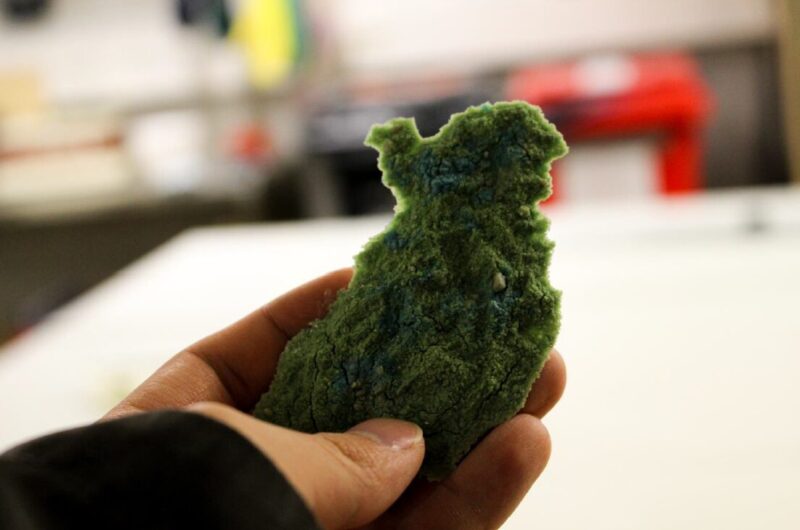
After the glass kiln was ready the pieces needed to be washed and scrubbed, polished and scrutinised. This had its own challenges with the fragility of the material. Pirkitta Pullinen for instance accidentally broke one of her four glass pieces, that were meant to be the hanging mobile, while she was handling the piece.
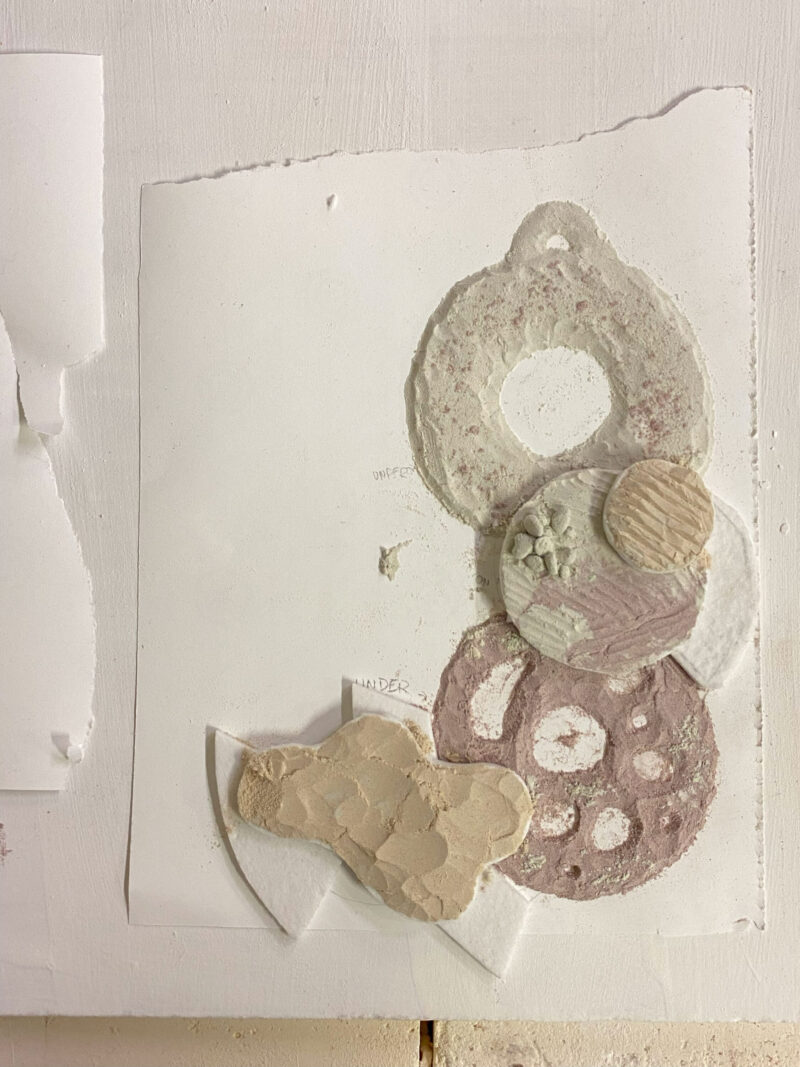
From mud to art
We created our sculptures in the ceramic studio. The clay we had in our use was white stoneware, either coarse raku clay or smoother clay with iron freckles which is great for more intricate work.
We were also given different colored oxide washes and engobes to paint the pieces before the first firing. Glazing took place on another day though some decided not to glaze their pieces at all. The glaze, P30 by Kyllikki Salmenhaara , contains fine earthenware in a powder form that creates a wonderful opalescent effect during firing.
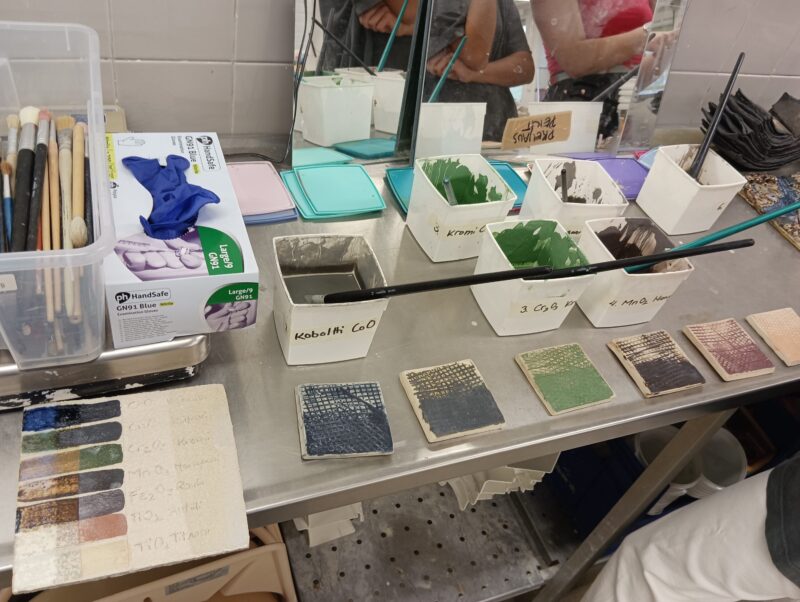
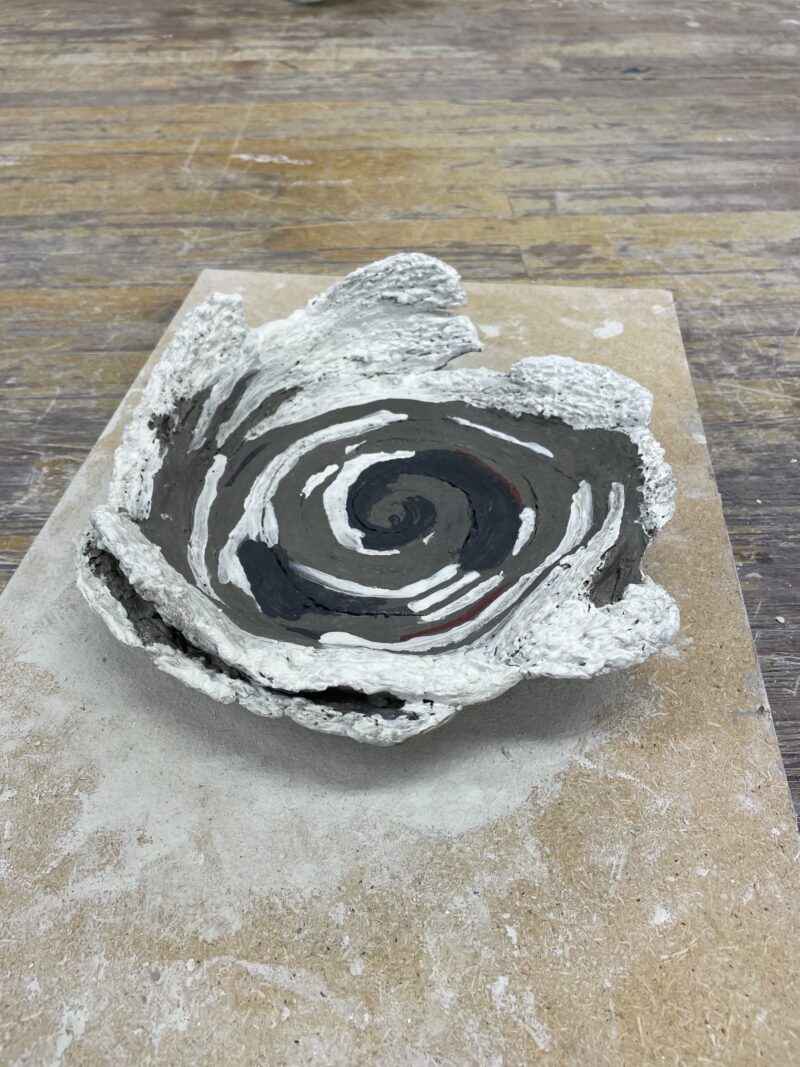
Heta Shukla thought the glazing part was fun:
“I used different glazes, mixing them to create the perfect colours. It was exciting to see how these colors would react during firing, knowing they would change in unexpected ways. After layers of shaping, drying, coloring, and firing, the outcome felt like a perfect reflection of the time and care put into it. The entire process captured the idea of layers of time, from start to finish.”
Ceramic artisan Tiina Sihvonen has enjoyed her time at HAMK even with some minor challenges with her essay assignments: “It has been wonderful to work with clay again in a new milieu and with new people. On the other hand, I haven’t done anything with glass and it’s exciting as a new material.”
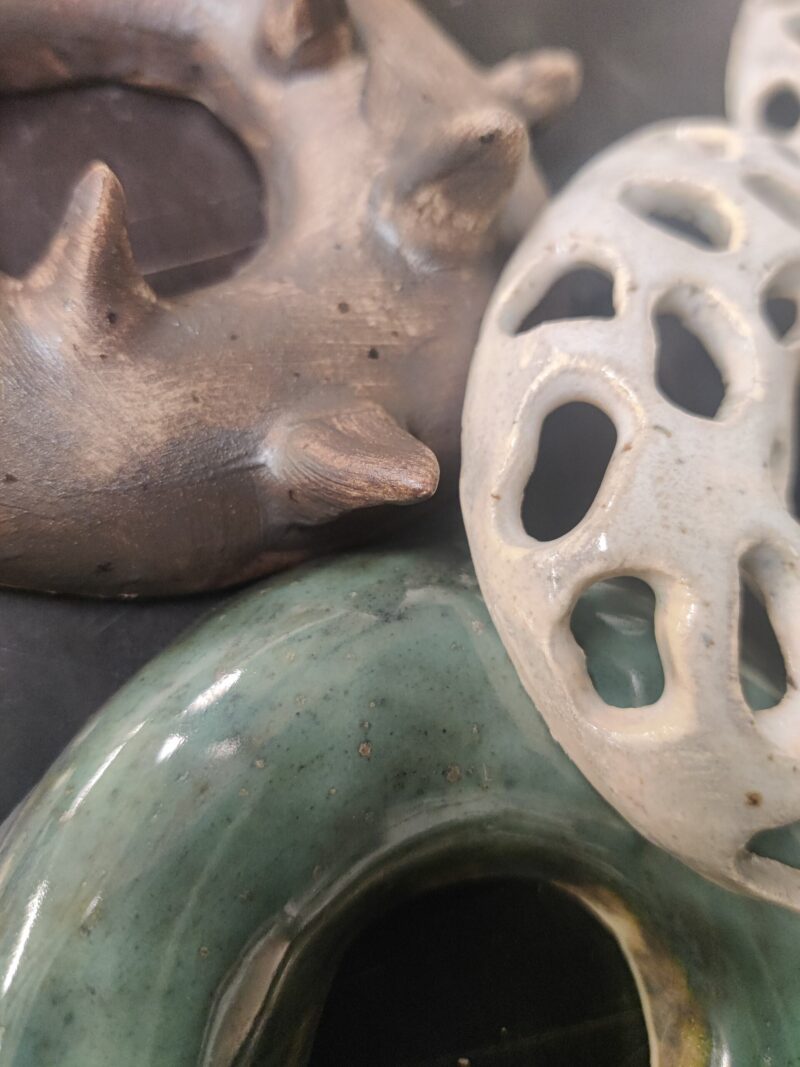
Proudly presenting – Layers of Time
From working on our individual art pieces and solving the problems with the designs we had to change our focus to collaborating with one other in creating an exhibition of our work. From fifty or so art pieces we chose a few dozen to showcase our main theme of layers, Layers of time; Earth and Water.
What we wished to exhibit was not only the pieces we as artists created but the fragility of the material itself as well as the fragility of time. Time it takes to create something that is
rock hard and able to withstand time itself. Time it takes to become the person, the artist and the designer to create sustainable designs in a world that is full of objects already.
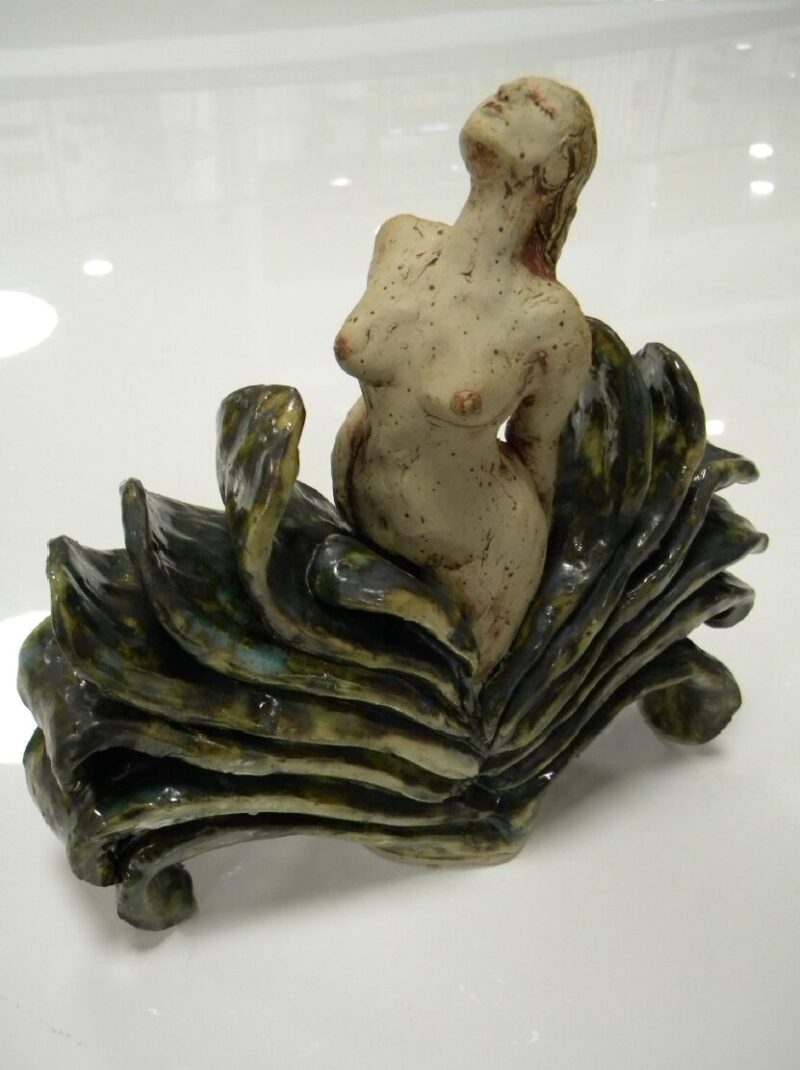
These two materials, glass and ceramics, are fragile and can easily shatter to million pieces. The piece can even break in the kiln, before you have had the chance to use the object once! People who work with ceramics often say that the field of ceramics sure does keep you humble, shaking their heads as the kiln gods have showed their alchemical vigor forcing the artist to start over again.
As we continue with our path as future designers, we must keep all this in mind and give ourselves the time it takes to become not only designers but changemakers.
Author
Our student Pirkitta Pullinen wrote this article as part of the first year studies in our Smart and Sustainable Design degree programme.